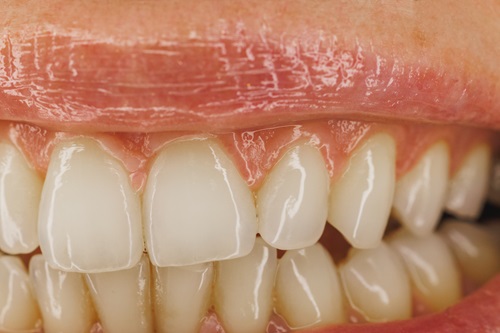Are Stained Teeth a Sign of Poor Oral Hygiene?

Have you ever wondered if your stained teeth are a sign of poor hygiene? Many people would associate stained teeth as unhealthy, while clean, white teeth are healthy. But do stained teeth always mean you have poor oral hygiene?
Based on our dentists, that is not always the case. While stained teeth can sometimes indicate oral health issues, they don’t always mean you’re neglecting your dental care.
Let’s take a look at the different root causes of teeth staining and the signs of poor oral hygiene.
Causes of Tooth Staining
Tooth staining is spots on the teeth that are either yellow, brown, or grey. This happens because of different reasons, but not all of them are related to oral hygiene.
There are three main types of stains that can affect the teeth: extrinsic, intrinsic, and age-related stains. Let’s discuss each one:
Extrinsic Stains
Extrinsic stains typically affect the outer layer of the tooth (the enamel). These are usually caused by
- Diet: Consuming coffee, tea, red wine, soft drinks, and certain fruits and vegetables.
- Tobacco Use: Smoking or chewing tobacco is a common cause of tooth stains because of the chemicals that can directly and indirectly affect the teeth.
- Poor Oral Hygiene: Not brushing and flossing regularly can lead to build-up of plaque. When it hardens, it becomes tartar, which stains the teeth over time.
Intrinsic Stains
Intrinsic stains happen inside the tooth and directly affect the dentin of the tooth. This type of stain happens because of:
- Medications: Some antibiotics, like tetracycline, can cause tooth discolouration if taken during tooth development.
- Fluorosis: Excessive fluoride intake during childhood can cause white spots or streaks on the teeth.
- Blunt Trauma: An injury to a tooth can cause it to turn yellow, brown, or grey.
Age-Related Stains
No one can stop our bodies from aging. Every organ and system in our bodies changes, even our teeth. Naturally, our teeth become more yellow or grey as we get older. Our enamels also become thin, and the darker dentin underneath is more exposed.
Signs of Poor Oral Hygiene
While many people will associate stained teeth with poor oral hygiene, this is not the one and only reason behind it. Here are some other signs of poor oral health:
Bad Breath (Halitosis)
Having bad breath from time to time is normal, especially when you just ate a dish with lots of garlic. But when it does not go away, and you have persistent bad breath, that is called halitosis—this can be a sign of poor oral hygiene.
Gum Disease
Gum disease usually starts with gingivitis, which is a mild gum disease when your gums look red, swollen, and easily bleed. If this condition is left untreated, it can progress to periodontitis, and can potentially lose a tooth.
Tooth Decay
Cavities or tooth decay is what you get when your tooth is damaged — usually because of a buildup of plaque and bacteria on the teeth. This can cause pain, sensitivity, and visible holes or dark spots.
Plaque and Tartar Buildup
Plaque is a sticky film of bacteria that forms on your teeth. If these are not removed through regular brushing and flossing, they harden on the surface of the teeth and become tartar. When this happens, only a dental professional can remove the hardened film.
Tooth Sensitivity
Tooth sensitivity means they become sensitive to hot, cold, or sweet foods and drinks. This can cause your enamel to erode and cavities to form, which are signs of poor oral hygiene.
Professional Treatments for Stained Teeth
If your teeth are stained despite good oral hygiene practices, maybe a professional dental service is meant for you. Here are several professional treatments that can help:
Teeth Whitening
Professional teeth whitening is a safe and effective way to remove stains and brighten your smile. Blue Gum Dental can provide in-chair teeth whitening and custom-made take-home whitening kits for patients who decide to have their teeth whitened.
Dental Bonding
Dental or teeth bonding is when a tooth-coloured resin is applied to the teeth to cover up its stains and improves the teeth’s appearance. This can also be done on chipped or cracked teeth as an alternative for amalgam fillings. Dental bonding is a quick, non-invasive procedure.
Veneers
Veneers have been a crowd favourite for some time now because of how great they can conceal natural teeth. These are thin, custom-made shells that cover the front surface of your teeth and provide a long-lasting solution for a brighter smile.
Regular Cleanings
Simple regular cleanings can help remove some of the stains from your teeth. They can take out plaque and tartar where regular brushing and flossing might miss. Getting this done regularly will help prevent teeth stains and maintain oral health.
The Ultimate Solution to Oral Hygiene
While stained teeth can sometimes be a sign of poor oral hygiene, they are not always the reason behind it. Knowing more about the causes of tooth staining and the signs behind it can make you more informed on the next best step you have to do.
If you have stained teeth and are concerned about it, have a teeth whitening done with Blue Gum Dental. Contact us today to book your next dental checkup and clean.
